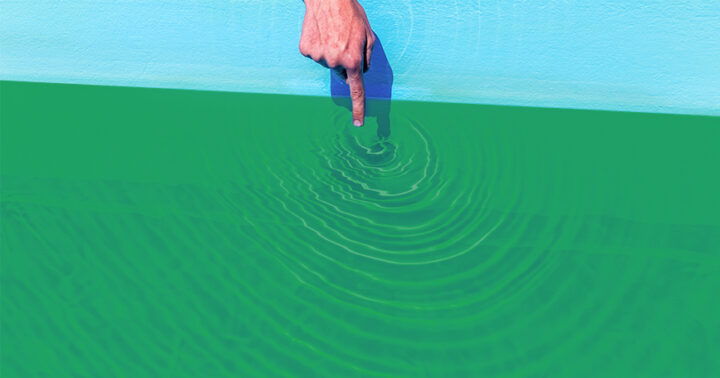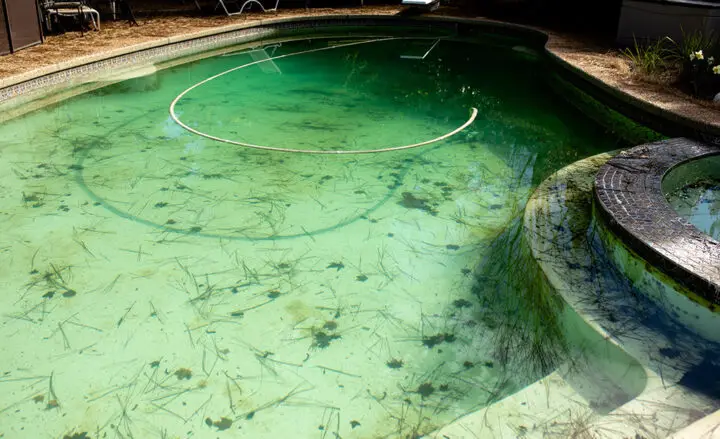Green Pool Water? Here Is What You Need To Do To Get Your Pool Water Back On Track!

Is your pool water looking green? When this happens, your pool no longer looks inviting. No one would like to get into a pool that looks green. Not only does it look unappealing but it can be risky. The green color of the water is most likely due to the growth of algae. If you enter a pool that has algae in it, you can face skin infections. This is why you need to take immediate action if you notice your pool water turning green. The tips given here tell you how to do it effectively.
Reasons for the pool water turning green

There are two reasons why pool water can turn green, according to NewcastleSwimmingPools. The main reason is the presence of algae. If your swimming pool is not maintained properly, then it can become a breeding ground for algae. You must note that algae can grow very fast. Even before you know what has happened, you will have a full-blown algal infestation that turns your pool water green. If not fixed, it can make your pool unusable, and then you need to spend a lot of money. So act to fix it fast.
There is one more reason for the pool water becoming green. This is because of copper in the pool. In case, the filtration system of your pool has copper elements, then there is a possibility of copper ions entering your pool. If your pool water is not properly balanced, it can corrode the copper leading to leakage of copper into the pool. This copper can make your pool water turn green.
Act depending on the cause
The first step to take is to determine the cause of the green water. Algae is usually visible. You can consider getting the water tested to know if copper ions are present. Once you determine the cause, you can then take the right action. There is also a possibility of the water having both algae and copper ions. In such a case, you need to take action to fix both issues.
Getting rid of copper
When your pool becomes green because of the presence of copper ions, then you need to first remove the copper ions from the pool. For this, you need to use a product that removes copper from the water. There are many such products in the market. Research and buy one of the best products. Add this product to the pool water and it will eliminate the copper through the filtration system. This is the first fix to remove copper. The reason you have copper is because of the corrosion of copper. You need to stop the corrosion of copper to prevent this problem. The solution for this is to balance pool water. Get the water tested and ensure recommendations are adhered to. Effective maintenance prevents corrosion and solves the problem of copper causing water turning green.
Getting rid of algae

In most cases, the reason for pool water turning green is the presence of algae. The first thing to do is to get rid of the algae. There are different ways in which you can do it. Depending on the extent of the algal infestation, you may need to do one or more of these:
Do a vacuum clean first: The first step is to remove algae on the surface of the pool along with any other debris. Removing algae that are stuck to the sides and floor takes more effort. But at the first stage, use the vacuum filter valve and change it to the waste option. This removes floating algae along with other debris.
Try shocking the pool: The best way to get rid of a problematic algal infestation is by shocking your pool. Shocking is a chemical process that involves adding concentrated chlorine (more than 70% of chlorine). When you shock clean the pool, it ensures all the algae (and other bacteria) would be killed. It is a great way to sanitize the pool. You may need to repeat this process if you have a severe algal infestation.
Rebalance the water: Once all the above are done, you need to get the water tested. Based on the lab recommendations, you need to rebalance the water.
Prevention of algae infestation

Now that you have got rid of the algae, you need to ensure they do not return. This is how you can do it:
- Ensure the chlorine levels in your pool are optimal. The levels need to be in the range of 3.75 ppm to 4 ppm. This is sufficient to prevent algae.
- Ensure that the pool is maintained properly.
- Brush the sides and walls of the pool at least once a week. This will help to get rid of algal spores that settle on the walls.
- Ensure the pool circulation works well so chlorinated water spreads everywhere preventing algae from growing.
Once you know the cause for your pool water becoming green, you can get it back on track. You can solve the problem and also prevent it from recurring.
